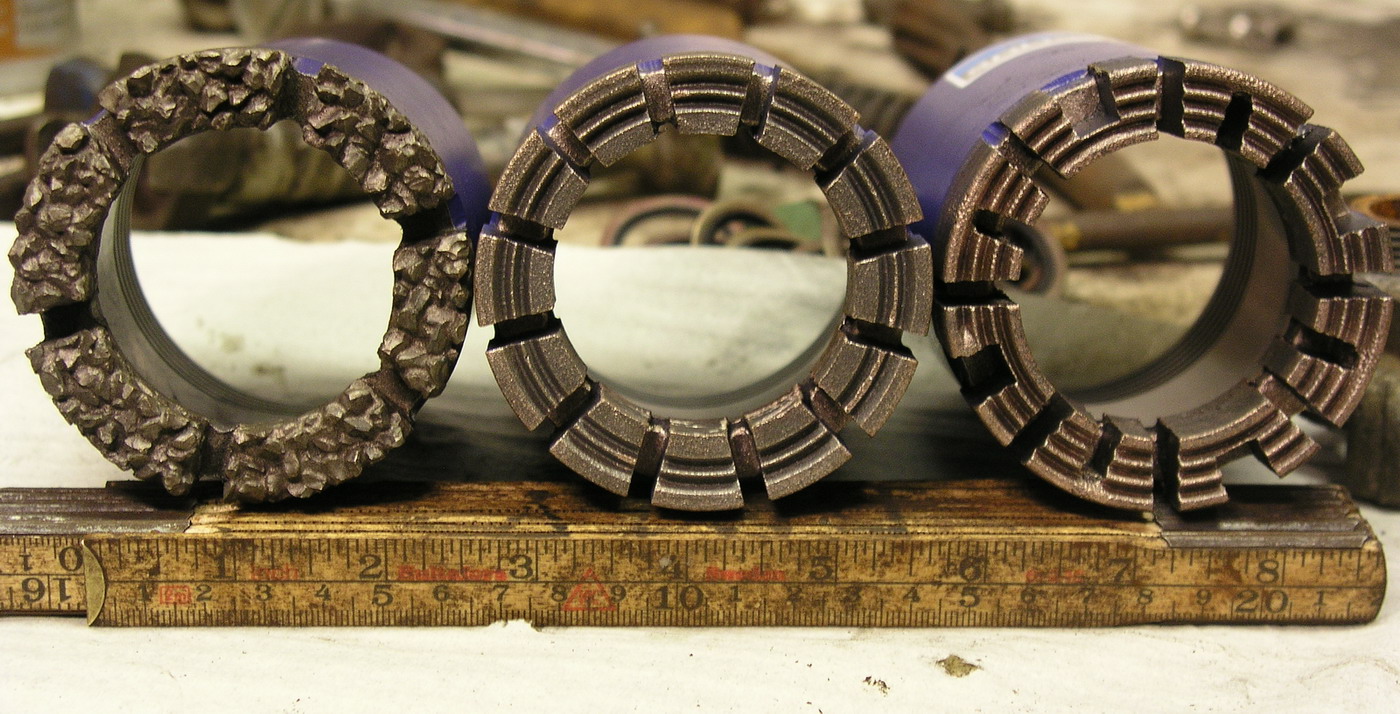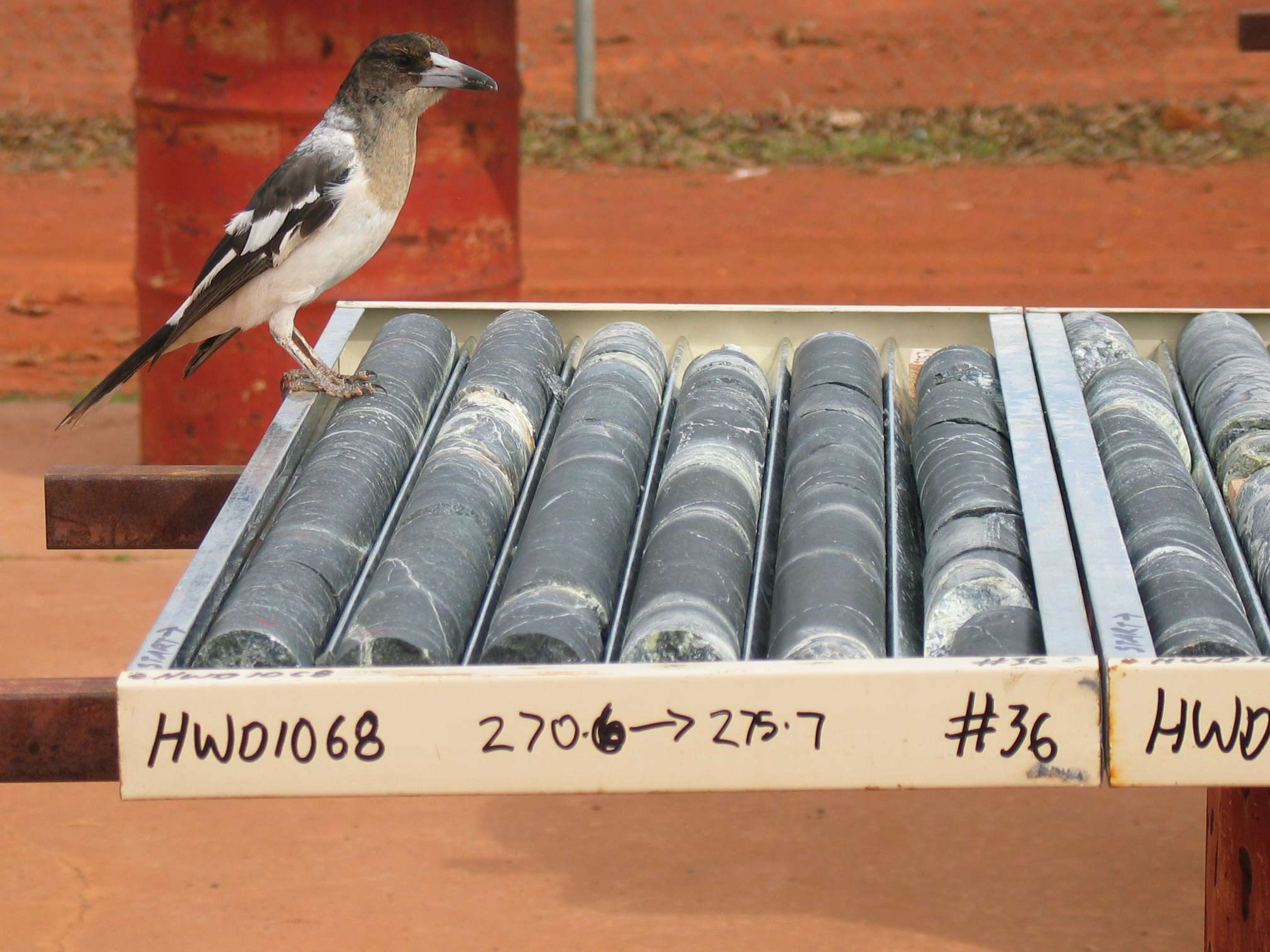Diamond drilling on:
[Wikipedia]
[Google]
[Amazon]
Exploration diamond drilling is used in the mining industry to probe the contents of known
 Rodolphe Leschot is often cited as being the inventor of the first core bit in 1863. Early
Rodolphe Leschot is often cited as being the inventor of the first core bit in 1863. Early
 {, class="wikitable"
, -
! Size
! Hole (outside)
{, class="wikitable"
, -
! Size
! Hole (outside)
diameter, mm ! Core (inside)
diameter, mm , - , AQ , 48 , 27 , - , BQ , 60 , 36.5 , - , NQ , 75.7 , 47.6 , - , HQ , 96 , 63.5 , - , HQ3 , 96 , 61.1 , - , PQ , 122.6 , 85 , - , PQ3 , 122.6 , 83 , - , CHD 76 , 75.7 , 43.5 , -ÁáÀĴĠġĥĥÌÎïěļĻħíìĒÏĕĩǐĪīňŇźŹȳÿÿŸŷŶýÝŵŴűəþßŰŤťōŎÚÚúúúúúúúúúúúúŤŤŤŤŤȚșșșșșșŞŞŞŞŞŞŝŝŝŝŝÔÔÔÔÔÔôôôôôǚǚǚǚǚǚǚǚØØØØØØØØŰŰŰŰŰŴŴŴŴŴŴŴŴŴƏƏƏƏƏƏƏƏƏƏƏƏƏƏƏƏƏƏƏƏƏƏƏƏǑǑǑĢĊčĝĭóĬ , CHD 101 , 101.3 , 63.5 , - , CHD 134 , 134.0 , 85.0 , -
Exploration Drilling Methods
Economic geology Mineral exploration
ore
Ore is natural rock or sediment that contains one or more valuable minerals, typically containing metals, that can be mined, treated and sold at a profit.Encyclopædia Britannica. "Ore". Encyclopædia Britannica Online. Retrieved 7 Apr ...
deposits and potential sites. By withdrawing a small diameter core of rock from the orebody, geologists
A geologist is a scientist who studies the solid, liquid, and gaseous matter that constitutes Earth and other terrestrial planets, as well as the processes that shape them. Geologists usually study geology, earth science, or geophysics, althou ...
can analyze the core by chemical assay and conduct petrologic
Petrology () is the branch of geology that studies rocks and the conditions under which they form. Petrology has three subdivisions: igneous, metamorphic, and sedimentary petrology. Igneous and metamorphic petrology are commonly taught together ...
, structural
A structure is an arrangement and organization of interrelated elements in a material object or system, or the object or system so organized. Material structures include man-made objects such as buildings and machines and natural objects such ...
, and mineralogical
Mineralogy is a subject of geology specializing in the scientific study of the chemistry, crystal structure, and physical (including optical) properties of minerals and mineralized artifacts. Specific studies within mineralogy include the p ...
studies of the rock. It is also often used in the geotechnical engineering industry for foundation testing in conjunction with soil sampling methods.
History
 Rodolphe Leschot is often cited as being the inventor of the first core bit in 1863. Early
Rodolphe Leschot is often cited as being the inventor of the first core bit in 1863. Early diamond
Diamond is a solid form of the element carbon with its atoms arranged in a crystal structure called diamond cubic. Another solid form of carbon known as graphite is the chemically stable form of carbon at room temperature and pressure, ...
drilling opened up many new areas for mineral mining, and was related to a boom in mineral exploration in remote locations. Before the invention of the portable diamond drill, most mineral prospecting was limited to finding outcrops at the surface and hand digging. In the late 1970s, General Electric pioneered the technology of polycrystalline diamond compacts (PDCs) as a replacement for natural diamonds in drill bits.
Diamond drilling
Exploration diamond drilling differs from other geological drilling (such as Reverse Circulation (RC) Drilling) in that a solid core is extracted from depth, for examination on the surface. The key technology of the diamond drill is the actual diamond bit itself. It is composed of industrial diamonds set into a soft metallic matrix. As shown in the figure, the diamonds are scattered throughout the matrix, and the action relies on the matrix to slowly wear during the drilling process, so as to expose more diamonds. The bit is mounted onto a core barrel which is attached to the drill string, which is connected to a rotary drill rig. Drilling mud is injected into the drill pipe, so as to wash out the rock cuttings produced by the bit and also to reduce the heat produced due to friction which causes less wear and tear of the bits. An actual diamond bit is a complex affair, usually designed for a specific rock type, with many channels for washing. The drill uses adiamond
Diamond is a solid form of the element carbon with its atoms arranged in a crystal structure called diamond cubic. Another solid form of carbon known as graphite is the chemically stable form of carbon at room temperature and pressure, ...
encrusted drill bit
Drill bits are cutting tools used in a drill to remove material to create holes, almost always of circular cross-section. Drill bits come in many sizes and shapes and can create different kinds of holes in many different materials. In order ...
(pictured on the right) to drill through the rock. The drill produces a "core" which is photographed and split longitudinally. Half of the split core is assayed while the other half is permanently stored for future use and re-assaying if necessary. Although a larger diameter core is the most preferred it is the most expensive. The most common diameter sizes of core are NQ and HQ.
Core extraction
Merely advancing the drill by rotary action (and washing) causes a core to be extracted inside the barrel as shown. However, at a depth of perhaps 300 m, there must be a way to retrieve the core and take it to the surface. Constantly withdrawing the entire heavy drill pipe is impractical, so wireline drilling methods were developed to pull up the core inside the barrel. If the rock would always be solid granite, and the core would always break at the drill bit, then it would be a simple matter to stop the drilling, and lower a simple grabbing device by a wire and pull up the core. Unfortunately, many applications require an undisturbed core in fractured rock, which calls for elaborate wire-line devices. The photo shows the extraction of a core, using a triple-tube wire-line system, capable of extracting core under the worst conditions. This is very important when exploring fault zones such as theSan Andreas Fault
The San Andreas Fault is a continental transform fault that extends roughly through California. It forms the tectonic boundary between the Pacific Plate and the North American Plate, and its motion is right-lateral strike-slip (horizonta ...
.
Tube sizes
There are five major "wire line" tube sizes typically used. Larger tubes produce larger diameter rock cores and require more drill power to drive them. The choice of tube size is a trade-off between the rock core diameter desired and the depth that can be drilled with a particular drilling rig motor. Standard "Q" wire line bit sizes {, class="wikitable"
, -
! Size
! Hole (outside)
{, class="wikitable"
, -
! Size
! Hole (outside)diameter, mm ! Core (inside)
diameter, mm , - , AQ , 48 , 27 , - , BQ , 60 , 36.5 , - , NQ , 75.7 , 47.6 , - , HQ , 96 , 63.5 , - , HQ3 , 96 , 61.1 , - , PQ , 122.6 , 85 , - , PQ3 , 122.6 , 83 , - , CHD 76 , 75.7 , 43.5 , -ÁáÀĴĠġĥĥÌÎïěļĻħíìĒÏĕĩǐĪīňŇźŹȳÿÿŸŷŶýÝŵŴűəþßŰŤťōŎÚÚúúúúúúúúúúúúŤŤŤŤŤȚșșșșșșŞŞŞŞŞŞŝŝŝŝŝÔÔÔÔÔÔôôôôôǚǚǚǚǚǚǚǚØØØØØØØØŰŰŰŰŰŴŴŴŴŴŴŴŴŴƏƏƏƏƏƏƏƏƏƏƏƏƏƏƏƏƏƏƏƏƏƏƏƏǑǑǑĢĊčĝĭóĬ , CHD 101 , 101.3 , 63.5 , - , CHD 134 , 134.0 , 85.0 , -
References
External links
Exploration Drilling Methods
Economic geology Mineral exploration